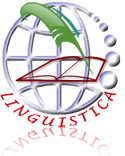A COMPARATIVE STUDY OF GENDER LANGUAGE IN PRIDE AND PREJUDICE AND FRANKENSTEIN NOVELS
DOI:
https://doi.org/10.24114/jalu.v2i2.930Abstract
ABSTRACT This study deals with the similarities and differences of gender language expressed in Pride and Prejudice and Frankenstein Novels. The object of this study is to find out the similarities and differences of gender language which are expressed in Pride and Prejudice and Frankenstein novels .This study used descriptive qualitative research. The data were collected by documentary technique and the instrument of collecting data was documentary sheet. The data were analyzed by descriptive comparative. The findings indicated that there were some similarities and differences found between those two novels. The similarities were found in three features: a) Politeness; all the characters in Pride and Prejudice and Frankenstein novels used polite sentences b) Grammar; all the characters in novels used hypercorrect grammar c) Precise color terms; there was no found the using of this feature in novels. The differences were found in the other seven features: Lexical Hedges, Tag Question, Intensifier, Swear Words, Empty Adjective, Emphatic Stress, Rising Intonation on Declarative. In Pride and Prejudice, these seven features of gender language dominantly used by women, while in Frankenstein novel they dominantly used by men. It is hoped that the result of this study will be useful for anyone who wants to study about literary, especially gender language. Keyword : prose, novel, gender languageDownloads
Issue
Section
Articles
License
Copyright (c) 1970 Safriana Silitonga, I WayanDirgayasa Tangkas

This work is licensed under a Creative Commons Attribution-ShareAlike 4.0 International License.
Authors who publish with this journal agree to the following terms:
- Authors retain copyright and grant the journal the right of first publication with the work simultaneously licensed under a Creative Commons Attribution License that allows others to share the work with an acknowledgment of the work's authorship and initial publication in this journal.
- Authors are able to enter into separate, additional contractual arrangements for the non-exclusive distribution of the journal's published version of the work (e.g., post it to an institutional repository or publish it in a book), with an acknowledgment of its initial publication in this journal.
- Authors are permitted and encouraged to post their work online (e.g., in institutional repositories or on their website) prior to and during the submission process, as it can lead to productive exchanges, as well as earlier and greater citation of published work (See The Effect of Open Access).
- This work is licensed under a Creative Commons Attribution-ShareAlike 4.0 International License.

